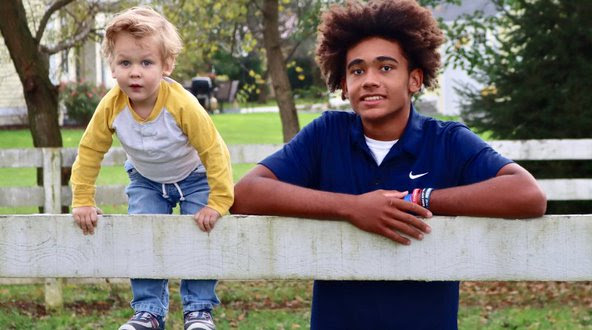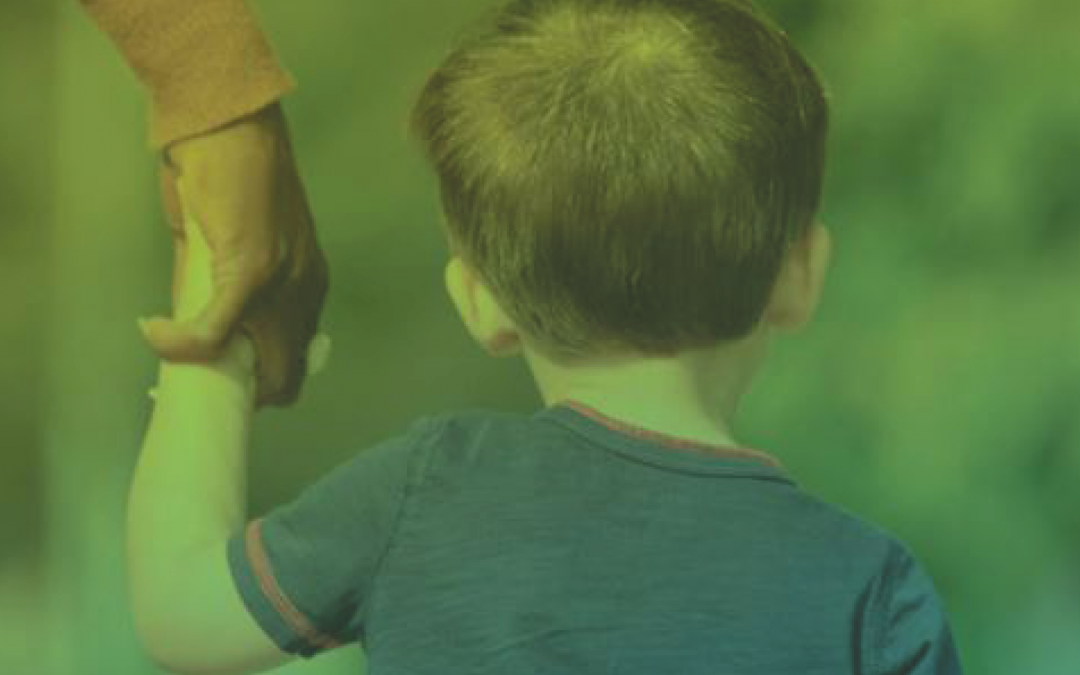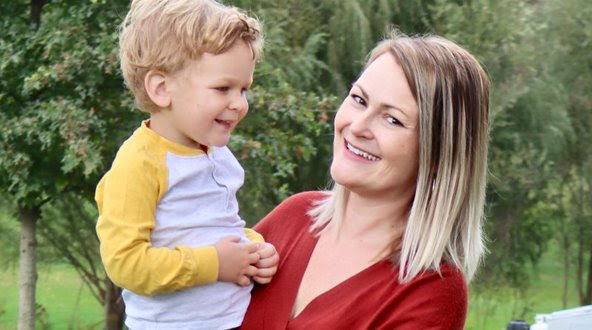
by Jessie Cooper | Feb 17, 2022
This past November I made a decision to stop publicly writing until my divorce was final. I’ve spent hours on the stand just reading my own bank statements and wanted to prevent my blog from somehow adding to the length of the divorce process. In September of last year, the courts scheduled a final hearing for March 3rd, 2022. “Just 6 months,” I thought, “I can do 6 more months.”
This past week I received a call from my new lawyer… another extension. Four more months. The date I was told was final was not. There is so much I want for my children, so four more months of the same felt unreal, yet here it was. It felt like Groundhog Day. Haven’t I been here before? Stuck in the same?
Dealing with an Extended Divorce Process
Yes, I have been divorcing for what will now be more than half of my younger son Declan’s life. He was 18 months when this all started, now he wants a race car cake, like Metchie (his older brother, Dametrius) for his third birthday. My Henry will be ready for kindergarten this fall. My son Dametrius will start looking at colleges.
My children have kept growing, yet their mama’s world has seemed stuck in the same storm. Sunshine was promised yet clouds continue to roll in. As hard as my situation is (divorcing in a small town while leaving domestic violence) I can’t help but think of all of us, stuck in the pandemic for longer than my divorce, waiting for a clearing stuck in the darkness.
Last September when I received the final divorce date I thought “OK after my divorce is final life can go on.” I will be able to make plans. I want to go to the beach. To hold my babies for more than two nights at a time before transferring to their father yet again. To begin building a life with the amazing partner I am lucky to call mine. To spend time with friends. The list went on and on.
With COVID, I have felt the same way, wishing for it to be over so life can go on. Have you? How many times have you found yourself saying, “when COVID is over, when it’s normal again, I’m going to…” fill in the blank. I know personally, I’ve thought about activities for the kids, swim lessons, flying on an airplane with children, and so much more. My sister’s darling twins turned 3 this year, she really, really wants to take them to storytime.
Finding Motivation
I don’t know about you, but when there is a restriction present it is hard to plan, to know what to do, to make things feel formal. Whether it’s a divorce, a pandemic, or anything else outside of your control, how do you convince yourself to go on when sometimes all you want to do is go back? Back to the way things were before the restriction was there.
This week when I got the news of yet another delay something shifted in me. Snapped if you will. I couldn’t do it. I could not spend one more moment telling myself, “when I’m divorced I’ll fill in the blank.” I don’t know about you but I also cannot do one more, “when COVID is over then I’ll fill in the blank” either.
I looked at my babies (OK now full-on boys) and right in front of me, life is happening. They are growing, evolving, and living. They aren’t waiting for anything to change their lives, they are just alive. While divorce is hard, they are little, and often the biggest upset of the day is something like no ice cream or Mario time.
Dametrius is actually thriving and his thriving splits my face into a smile I cannot shake. In looking at my children and now two restrictions without an end I can depend on I decided, “you know what, I can live too.” I don’t need to wait for this to be over and the truth is life isn’t going to be the same after all of this but it’s not going to be better either. It’s just going to be different. There are amazing things happening right now in the darkness, shining stars if you will.
Seizing the Now
Sure there are a million things my heart and mind want to do when I am divorced and the pandemic isn’t restricting our social life. But there is so much to love right here, right now. Just this past weekend, I celebrated my 35th birthday and was surrounded by the best friends and family I could ever ask for. I am not kidding you, outside of my dear Aunt Linda in Colorado and Catherine in New Mexico, I sat down with, dined with, or exchanged gifts with everyone I love. Everyone.
How does a woman become that lucky? And these people I love? They are the most incredible people you have ever met. After spending a week with them, alongside my boys, I basked in the evidence right in front of me that life can be beautiful even when hard things aren’t going anywhere. Or are going somewhere at a snail’s pace.
I thought to myself, what do I want to do now with my one wild and precious life? I do not have time today to fill the pages with my dreams. But today, I want to adjust my spirit for the slow walkout and to enjoy every step on the path. I’ve got some incredible people walking right alongside me.
When Life is Dark as Winter’s Night, Share Some Kindness, Bring Some Light.
Xoxo,
Jessie

by IABA Team | Nov 30, 2021
Many ABA therapy programs take place in-home. The comfortable setting makes in-home treatment more conducive to the needs of some children with ASD. In-home ABA therapy may differ from the therapy held in a clinical setting but what do those differences look like?
Family Involvement
Some children with ASD may require in-home ABA therapy to address issues with family members. This also allows family members to interact and learn how to use some of the ABA methods when treatment is over.
Other at-home issues may also require specific in-home therapy. Learning to properly use or interact with integral appliances, routines, and schedules may require the expertise of an in-home ABA therapist.
ABA Therapy Space
In-home ABA therapy usually requires designated spaces to be used. Each program is different and may use different spaces. All or most of the therapy programs will be conducted in these spaces, so be ready to slightly alter your daily routine if a specific room is off-limits for any amount of time (unless required to be there).
Being comfortable with a space may be beneficial to an ABA treatment program, so be sure to talk to your child’s therapist about therapy spaces.
In-Home ABA Therapy Scheduling
In-home ABA therapy is usually recommended to be conducted with a schedule that will be used during weekends & holidays. Creating a matching schedule for therapy and non-therapy hours can make transitions easier.
Talking to your child’s therapist can help you make a great schedule your child can follow. Be sure to include times, as moving times around can cause issues. Activities, free time, playtime, errand time, sleep schedules, meal times, and any other important family needs should be factored into both the therapy and regular home schedules.
Parents at Home
ABA therapists are not babysitters and should not be used in that capacity. Having a parent or guardian home is imperative during in-home ABA therapy sessions. If you are unable to be there for a specific time or something unmissable comes up, be sure to have a guardian take your place and not an unrelated babysitter.
Talking to your therapist about needs and duties as a parent can help you understand why you need to be home during therapy and what your role may require. Be sure to take any important notes and schedule any new activities.
ABA Therapy from IABA Consultants
If you have questions regarding autism treatment, education, or plans using ABA therapy, we are here for you! Our goal is to make sure no family is turned away due to financial constraints. Our therapy team would love to talk to you. Find the location closest to you and give us a call. We’re here for you.

by Jessie Cooper | Nov 24, 2021
This past week I wrote to you about setting boundaries with our children. In my blog, I wrote about the importance of boundaries for the emotional development of children. I also wrote to you about my own struggles in setting boundaries as a mama. One of the main reasons I struggle with setting boundaries for my own children is the (out)bursts that come with it.
It just so happens that as a clinician one of my primary areas of specialization is problem behaviors (the bursts). It’s what I went to graduate school to study over a decade ago. Over 10 years later and I can tell you the science of reducing problematic behaviors hasn’t changed. My own journey applying clinical skills at home, of course, has not (well, not totally). Today I’d like to write to you about both.
ABA & Bursts
Let’s start at the beginning with ‘burst science.’ Applied Behavior Analysis teaches us that social behaviors, both positive and negative, can be broken into units that can be studied. In studying units of behavior, BCBAs are able to identify the function of behaviors (why behaviors occur) and missing skills in the child they are studying. When it comes to reducing problem behaviors, behavior analysts are looking for why the behavior is occurring. This involves looking at what is happening before the behavior and what happens after the behavior.
While studying the environment before bursts occur, BCBAs look for a deficit in the child’s environment. What are they missing? Studying environments after bursts allow BCBAs to see if the child’s problem behaviors filled the deficit. If they did, the child is successfully using the problem behavior to get their needs met. This means the problem behaviors are being reinforced and will continue to occur. Magic I’m telling you. Magic.
You see, by studying what a child is seeking in a specific environment you can create interventions that fill the child up with what they are seeking to immediately decrease the problem behaviors. This isn’t a long-term solution, but it creates a short-term solution to make the days easier for the child and their families. While the child is being satiated BCBAs work on teaching new skills surrounding the child’s needs. This always looks like teaching functional communication skills, how to ask for exactly what you need.
Sometimes teaching specific skills can look like teaching patience and tolerance to ‘no’ when what the child wants isn’t good for them to have all the time. For example, if a child is throwing tantrums to get access to candy it’s damaging to have non-contingent candy all of the time. But if a child is tantruming for positive attention, we can fill them up without having to teach tolerance to no. Though we might have to teach waiting because sometimes mama (or papa) is busy.
The key to this remedy is to also remove reinforcement when a child is using their problem behavior to get their needs/desires met. If, in the scenarios above, the BCBA is providing candy (one piece) every 30 minutes and within 15 minutes the child hits to get access to the candy the BCBA cannot give the child the candy. If they do they will reinforce the hitting and take the motivation away from using words. It is here, in this little sweet spot of the behavior intervention, that bursts occur. Let’s talk about that.
Why Do Bursts Occur?
Underneath the bursts for children (and adults… more on that later) is fear that their needs/desires won’t be met. The bursts occur because, in the child’s mind, that very thing they want could become unattainable, their need won’t be met, and they will have to experience negative emotions. Dealing with both the fear of a need/desire not being met alongside psychologically negative emotions is tough stuff for a child. This right here? This is the hard part for parents and the sweet spot for teaching emotional resilience and intelligence.
As a mama, I know firsthand how easy it is to give in. To not want to deal with the temper tantrum, the screaming, and the crying. We are human beings and crying children is not comfortable. When we give in as parents at a given moment it provides immediate relief to ourselves and our children. It also perpetuates the very behaviors we don’t want to see more of and does not teach our children how to deal with the big emotions.
About a year ago Henry and I were at Dametrius’s football game and Henry wanted candy from the concession stand. I had packed snacks and knew sugar was on the menu later so I didn’t want him to have extra candy. I leaned down and told my little son, “no, not now we’ll have dessert at dinner”. Of course, in public, a full-on tantrum occurred. At that moment I thought how perfectly aligned this example was. You see at that moment I could have made a concession at the concession stand by just giving in. If I gave in Henry would happily watch the game and I wouldn’t have to be teaching Henry to breathe and tell me how he feels. But giving in also meant teaching my son to numb his emotions with food and that screaming works. So I stood my ground and worked with Henry.
You see under the bursts, as we are teaching boundaries. As children burst, their hearts need to know they can ride through negative emotions and still be safe on the other side. That nothing bad comes from feelings and that needs can be met in new ways. To me, as a clinician, I know that working through the bursts creates long-lasting, positive, change. As a mama, teaching my children to ride what is underneath the bursts is more valuable than any concession I could make at any given moment.
Xoxo,
Jessie

by IABA Team | Nov 23, 2021
Applied behavior analysis (ABA) is such a broad ASD therapy approach making it difficult to define what a typical program will look like. The amount of therapy and level of parent involvement varies, often according to the specific needs of the child.
ABA skills training programs and techniques can require several hours each day. While skills training programs are usually implemented by behavior therapists or teachers, parents are often taught critical skills to help their children transfer what they have learned in therapy to everyday life, especially at home.
ABA skills training programs for young children are often based in the home and require special materials and a dedicated area for working. ABA behavior modification therapy may include 1-2 hours of parent training per week with the parents using strategies they learn in between visits. An ABA therapist may also consult with teachers to help support positive behaviors in the classroom.
Strong ABA Therapy Programs
Strong ABA programs will all be different, as they should be tailored to the individual needs of each client. That said, all strong programs will also have some similarities on a general level.
Supervision
The program should be designed and monitored by a Board Certified Behavior Analyst (BCBA) or someone with similar credentials. Supervisors should have extensive experience working with children with autism.
Training
All participants should be fully trained, with supervisors providing support, monitoring, and ongoing training for the duration of the program.
Programming
The program should be created after a detailed assessment has been conducted and tailored to the child’s specific deficits and skills. Family and learner preferences should be given consideration in determining treatment goals. Generalization tasks should be built into the program to ensure the performance of skills in multiple environments.
Functional Programming
The goals selected should be beneficial and functional to the individual and increase or enhance his/her quality of life. A mix of behavior analytic therapies should be used so that the child has an opportunity to learn in different ways.
Data Collection
Data on skill acquisition and behavior reduction should be recorded and analyzed regularly. This data should be reviewed by the supervisor and used to measure the progress of the individual and provide information for program planning.
Family Training
Family members should be trained in order to teach and reinforce skills. They should be involved in both the planning and review process.
Who Provides the Actual ABA Services?
The top certification board for an ABA therapist is a Board Certified Behavior Analyst (BCBA) and comes from the Behavior Analyst Certification Board. Further certification can be issued in the form of a BCBA-D, indicating the therapist has a doctoral degree. Another license is the BCABA, which means having an ABA education at the level of a bachelor’s degree.
Some ABA therapists may indicate they have several years of experience but are not BCBAs. Individuals in this position should not be providing services unsupervised. Only board-certified BCBAs should be overseeing programs and implementing therapy methods.
ABA Therapy from IABA Consultants
If you have questions regarding autism treatment, education, or plans using ABA therapy, we are here for you! Our goal is to make sure no family is turned away due to financial constraints. Our therapy team would love to talk to you. Find the location closest to you and give us a call. We’re here for you.
Sources
Autism Speaks

by Jessie Cooper | Nov 17, 2021
Last week I wrote to you about my own journey in boundary-setting as a business owner and woman. This week I’d like to dive deeper into boundaries and talk to you as both a mama and a clinician about boundaries on the home front.
As a clinician, not only do I have extensive knowledge about early childhood development but one of my areas of expertise is reducing disruptive and dangerous behaviors. I spent the first five years of my career in Applied Behavior Analysis working in early intervention and on crisis cases.
I can see my young self now, rested for the day, walking into a therapy session and teaching things like how to work through a tantrum. I worked with each family on their own values and expectations of their child, observed the needs the child was trying to get through their tantrums, and taught consistent consequences to the family as well as adaptive skills to the child. In the range of adaptive skills I often taught language (use your words), patience, tolerance to hearing ‘no,’ disappointment tolerance, and expression of feelings. Each family and child was unique but the structure of the treatment was similar and based on boundary setting.
Learning Boundary Setting as a Mom
Fast forward about 8 years to when I became a mama and my son Henry became a toddler. Henry was (and is) a strong-willed child. I remember writing in his baby journal “I didn’t know babies came out like you…” because Henry was (and is) so vocal about how he sees things and how he wants things done. As a mama, I tried to also be a BCBA and use the same tried and true treatment structure with Henry. State a boundary, follow through with the boundary, use your words, and teach new skills. Easy right? No. Hard no.
Throughout my journey into motherhood, while I love my boys above all else, I have struggled with both postpartum depression (Henry) and a toxic home environment because of domestic abuse. Toss in three boys who all have varied needs, wants, desires, and voices and the stress of setting boundaries felt impossible. You see, the thing with setting boundaries is that when you first set them children tend to resist them. Boundaries feel like a “no” to children (often they are) and the “no” feels like something for them to rebel against. As a parent, you have to be ready for the explosion as you set expectations. I’m going to be honest here; I could not weather the explosions so I became a, “yes mama”. Ugh.
Boundaries by Example
A year ago when I left domestic abuse my children & me. We were living in a psychologically frightening environment and I knew, no matter how much I wanted their dad to get help, that I couldn’t stay any longer. I set the boundary that I would not live in an abusive environment and modeled this incredibly important boundary for my children.
Yet as the last year passed my small children had so much change in their little worlds. While some of my “yes mama” tendencies went away, some remained. Want a new toy? Sure. One more piece of candy? OK. TV time? You got it. This also worked the other way and when my children behaved in ways I didn’t love (not staying in bed, dumping their food on the floor, screaming for things) I would spend time making empty threats (one more time and then…) and eventually give in. While home life was much calmer as a single mama and my children were happy with me, I knew I had to reset, buckle in, and teach boundaries.
You see, without boundaries children don’t know which behaviors are OK and which ones are not. Without boundaries, they don’t learn how to navigate unpleasant emotions and what to do with their unpleasant emotions. They also don’t learn how to behave in social situations and can become impolite, spoiled, and disruptive.
Keep in mind that little children are still children. It’s basically their job to overreact while testing boundaries early on. It’s our job as parents, however, to shape their behaviors in positive ways. Yes of course I want my children to be happy but I also want them to know how to navigate their own inner and outer worlds. Boundaries are the way to teach this.
Maintaining Boundaries
As the fall came so did a new peace in our home. I set some simple boundaries for the boys I knew I could follow through with and continued to teach them how to navigate their emotions. I spent time making sure the values I set were in alignment with my values and that I was ready for tantrums when they came. The boundaries I set were for good listening, respect, kindness, and understanding “no.”
My children have become calmer overall after the initial, “holy crap” boundary bursts. Boundaries tell them what is OK and what is not so they don’t have to guess or use tantrums to figure a given situation out. When they don’t like the answer they know we can hold space for them to be sad or mad. It’s a win-win.
Me? I have a ton of compassion for the woman I was in early motherhood and know I was doing the very best I could at the time. I also am incredibly grateful that I’m in a space to apply my clinical skills to mommyhood. One day (and boundary) at a time.
Xoxo,
Jessie






